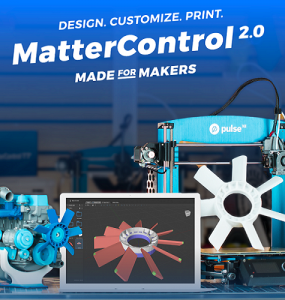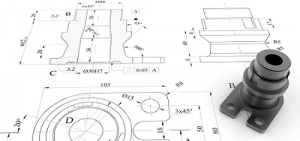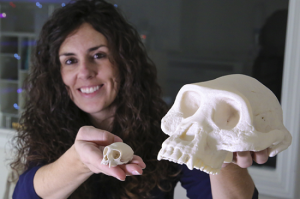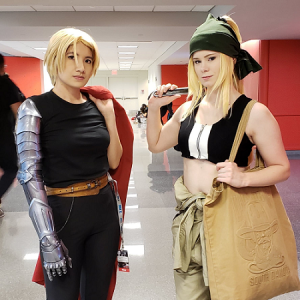We’re covering everything in today’s 3D Printing News Briefs, from software and metal 3D printing to education and cosplay. MatterHackers is introducing MatterControl 2.0, while Digital Alloys is defining application criteria for metal 3D printing. The MakerBot Innovation Lab in Georgia provides a professor with some much-needed 3D printed primate skulls for class, and Melissa Ng of Lumecluster recently attended the New York Comic Con with some 3D printed armor.
MatterHackers Introducing MatterControl 2.0
 This year, the development team at MatterHackers has been working hard to make a new and improved version of its free, open source, All-In-One design/slice/print software MatterControl. Now, the company has announced that MatterControl 2.0 is finally here.
This year, the development team at MatterHackers has been working hard to make a new and improved version of its free, open source, All-In-One design/slice/print software MatterControl. Now, the company has announced that MatterControl 2.0 is finally here.
“Loaded with lots of new features and tools to create, slice, and control your 3D printer, MatterControl has more capabilities than ever for newcomers and advanced users alike,” MatterHackers wrote on its website. “While some updates are behind-the-scenes like how the slicer operates, there are some major changes within the interface.”
MatterControl 2.0, which includes new features like Print Recovery, Re-Slice, and Software Bed-Leveling, is a unique 3D printing software that’s able to integrate design, preparation, and 3D printing all into a single, simple platform. MatterControl 2.0 features pre-configured 3D printer and material profiles for easy set-up, and offers users with endless customization options, thanks to integrated Design Apps and Design Tools. MatterControl 2.0 is now available for download on both the Windows and Mac operating systems.
Digital Alloys Defines Metal 3D Printing Application Criteria
 Massachusetts 3D printing company Digital Alloys, which introduced its Joule Printing for metals this summer, also has its own blog. Earlier this month, the company published the first part of a two-blog series that focused on finding the highest value applications for metal 3D printing; this week, the second post was published. Titled “Digital Alloys’ Guide to Metal Additive Manufacturing,” the company looks to help readers define application requirements for metal 3D printing “in a way that easily maps to the capabilities of the various metal AM technology options.”
Massachusetts 3D printing company Digital Alloys, which introduced its Joule Printing for metals this summer, also has its own blog. Earlier this month, the company published the first part of a two-blog series that focused on finding the highest value applications for metal 3D printing; this week, the second post was published. Titled “Digital Alloys’ Guide to Metal Additive Manufacturing,” the company looks to help readers define application requirements for metal 3D printing “in a way that easily maps to the capabilities of the various metal AM technology options.”
“As is true for any manufacturing process, each metal AM technology has its own set of capabilities, strengths, and weaknesses which dictate when and where it is useful,” the post reads. “Applications for metal AM have specific requirements. Using a structured framework helps determine whether these requirements can all be met by a particular technology.”
The post continues on to provide application criteria, such as materials and part specifications, that users should consider when choosing the best metal 3D printing method for their product, and details about the criteria. To learn more, check out the Digital Alloys blog post.
3D Printing Primate Skull Replicas
 While teaching a biology class about primates, University of North Georgia (UNG) faculty member Dr. Jessica “Jess” Hartel was in need of some specimens, so that her students would be able to compare differences between the various species; unfortunately, the biology department did not have a collection of primate skulls. But rather than ordering expensive replica skulls, Dr. Hartel was directed by Dr. Nancy Dalman, the head of UNG’s biology department, to the UNG MakerBot Innovation Center. Together with Dr. Jon Mehlferber, professor of visual arts at UNG, Dr. Hartel worked out a way to use some of the 32 3D printers in the center to replicate a variety of detailed primate skulls for a lot less money…the most expensive print of the bunch only cost $20.
While teaching a biology class about primates, University of North Georgia (UNG) faculty member Dr. Jessica “Jess” Hartel was in need of some specimens, so that her students would be able to compare differences between the various species; unfortunately, the biology department did not have a collection of primate skulls. But rather than ordering expensive replica skulls, Dr. Hartel was directed by Dr. Nancy Dalman, the head of UNG’s biology department, to the UNG MakerBot Innovation Center. Together with Dr. Jon Mehlferber, professor of visual arts at UNG, Dr. Hartel worked out a way to use some of the 32 3D printers in the center to replicate a variety of detailed primate skulls for a lot less money…the most expensive print of the bunch only cost $20.
Dr. Mehlferber explained, “We had to get permission from the Smithsonian Institution to use their digital scans to create the skulls, and then we were able to make the primate skulls for Dr. Hartel.”
The MakerBot Innovation Center – the only one located in Georgia – has been on UNG’s Dahlonega campus for four semesters now, thanks to a Presidential Incentive Award allocated by UNG’s President Bonita Jacobs. The award was granted after Dr. Mehlferber, Technology Integration Assistant Director Enes Aganovic, former UNG physical therapy faculty members, and UNG graduate students received funding for a research project that used 3D printing to create devices for children with disabilities.
3D Printed Cosplay Armor by Melissa Ng

L-R: Melissa Ng cosplaying as Edward Elric and Megan Dellario cosplaying as Winry Rockbell from Fullmetal Alchemist: Brotherhood.
If there’s one thing that my favorite maker Melissa Ng excels at…and that’s silly because there are so many things, but go with me…it’s how to combine 3D printing with cosplay. Self-taught 3D artist, designer, and dreamer Ng sells and showcases her amazing designs on her Lumecluster blog, and while she has previously worn her own designs in public, the recent New York Comic Con (NYCC) was her first foray into interpreting a character from an existing fandom – specifically Edward Elric from the popular anime series Fullmetal Alchemist: Brotherhood. Not only was Ng nervous about cosplaying for the first time, but the decision was also last minute, as she decided to create and 3D print a fully articulated interpretation of Elric’s automail arm in just five days, with an already full schedule.
“A sensible person would have probably skipped the cosplay…but I don’t like backing out once I’ve decided to do something,” Ng wrote on Lumecluster. “I’m stubborn like that. So, suffer I did! For art!”
“Needless to say, it was truly an experience that challenged all my expectations.”
Luckily, Ng had help from her friend Megan Dellario and sister Fiona Ng, and got to work, drawing inspiration for the automail arm from a different armor styles. She modeled the arm in Blender, 3D printed the parts out of flexible materials on her Form 2 and TAZ 6 3D printers, spent a lot of time finishing the plates, and then riveted them all together. Needless to say, Ng’s cosplay went over famously at NYCC. You can learn more about her experience in the video below:
Discuss these stories and other 3D printing topics at 3DPrintBoard.com or share your thoughts in the Facebook comments below.
Subscribe to Our Email Newsletter
Stay up-to-date on all the latest news from the 3D printing industry and receive information and offers from third party vendors.
You May Also Like
Gorilla Sports GE’s First 3D Printed Titanium Cast
How do you help a gorilla with a broken arm? Sounds like the start of a bad joke a zookeeper might tell, but it’s an actual dilemma recently faced by...
Nylon 3D Printed Parts Made More Functional with Coatings & Colors
Parts 3D printed from polyamide (PA, Nylon) 12 using powder bed fusion (PBF) are a mainstay in the additive manufacturing (AM) industry. While post-finishing processes have improved the porosity of...
$25M to Back Sintavia’s Largest Expansion of Metal 3D Printing Capacity Since 2019
Sintavia, the digital manufacturing company specializing in mission-critical parts for strategic sectors, announced a $25 million investment to increase its production capacity, the largest expansion to its operations since 2019....
Velo3D Initiates Public Offering in a Bid to Strengthen Financial Foundations and Drive Future Growth
Velo3D (NYSE: VLD) has been among a number of publicly traded 3D printing firms that have attempted to weather the current macroeconomic climate. After posting a challenging financial report for 2023,...































